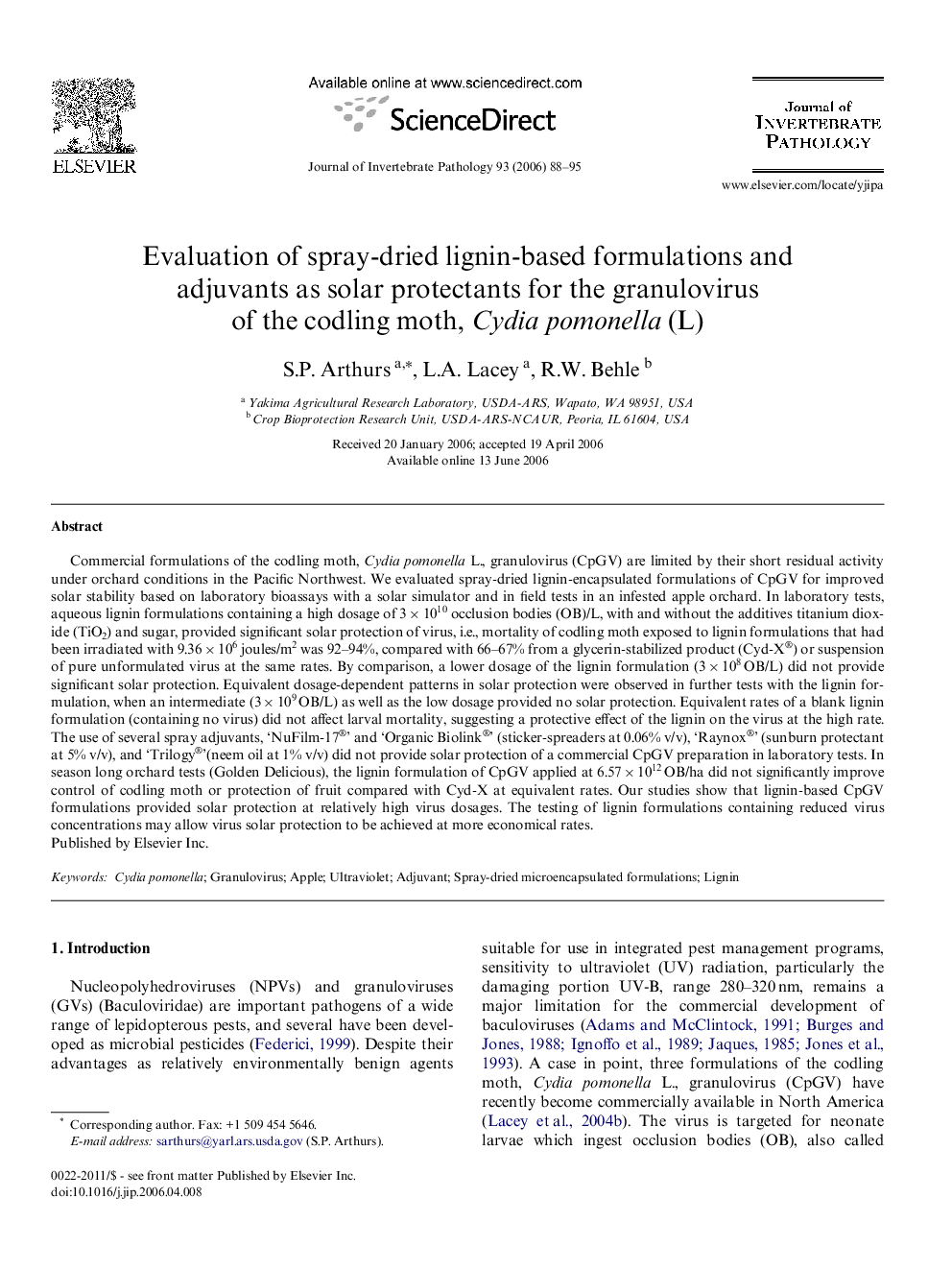| Article ID | Journal | Published Year | Pages | File Type |
|---|---|---|---|---|
| 4558776 | Journal of Invertebrate Pathology | 2006 | 8 Pages |
Commercial formulations of the codling moth, Cydia pomonella L., granulovirus (CpGV) are limited by their short residual activity under orchard conditions in the Pacific Northwest. We evaluated spray-dried lignin-encapsulated formulations of CpGV for improved solar stability based on laboratory bioassays with a solar simulator and in field tests in an infested apple orchard. In laboratory tests, aqueous lignin formulations containing a high dosage of 3 × 1010 occlusion bodies (OB)/L, with and without the additives titanium dioxide (TiO2) and sugar, provided significant solar protection of virus, i.e., mortality of codling moth exposed to lignin formulations that had been irradiated with 9.36 × 106 joules/m2 was 92–94%, compared with 66–67% from a glycerin-stabilized product (Cyd-X®) or suspension of pure unformulated virus at the same rates. By comparison, a lower dosage of the lignin formulation (3 × 108 OB/L) did not provide significant solar protection. Equivalent dosage-dependent patterns in solar protection were observed in further tests with the lignin formulation, when an intermediate (3 × 109 OB/L) as well as the low dosage provided no solar protection. Equivalent rates of a blank lignin formulation (containing no virus) did not affect larval mortality, suggesting a protective effect of the lignin on the virus at the high rate. The use of several spray adjuvants, ‘NuFilm-17®’ and ‘Organic Biolink®’ (sticker-spreaders at 0.06% v/v), ‘Raynox®’ (sunburn protectant at 5% v/v), and ‘Trilogy®’(neem oil at 1% v/v) did not provide solar protection of a commercial CpGV preparation in laboratory tests. In season long orchard tests (Golden Delicious), the lignin formulation of CpGV applied at 6.57 × 1012 OB/ha did not significantly improve control of codling moth or protection of fruit compared with Cyd-X at equivalent rates. Our studies show that lignin-based CpGV formulations provided solar protection at relatively high virus dosages. The testing of lignin formulations containing reduced virus concentrations may allow virus solar protection to be achieved at more economical rates.
